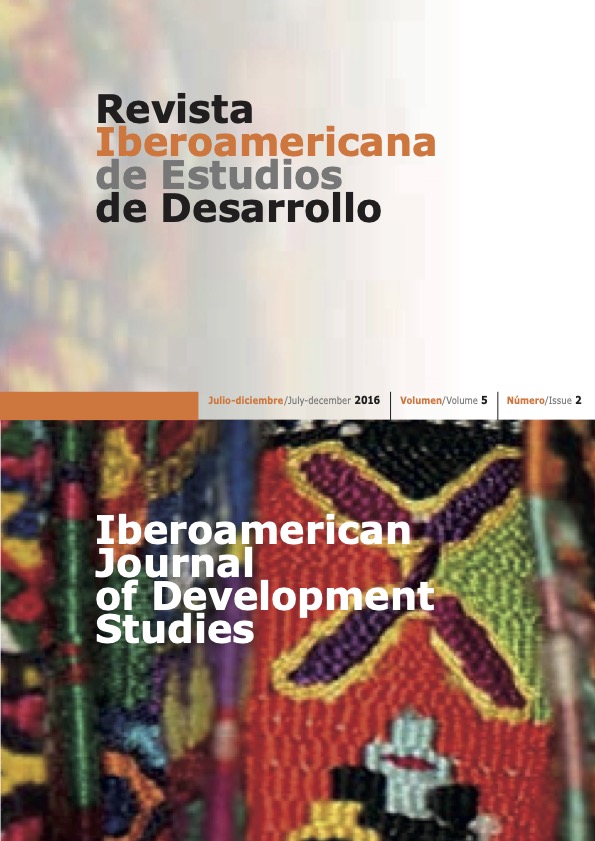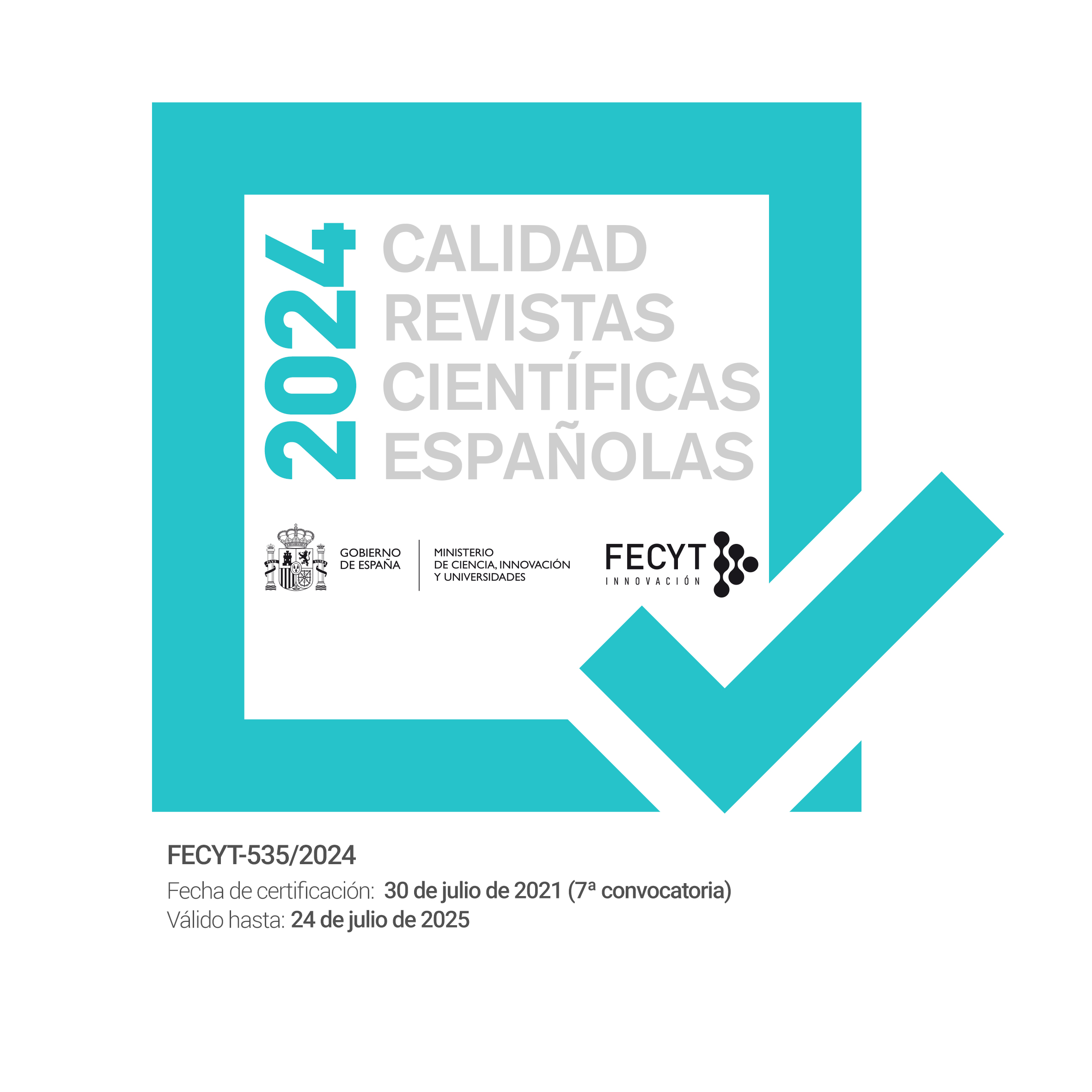El bajo uso de cuentas bancarias transaccionales en México: los que no pueden y los que no quieren
DOI:
https://doi.org/10.26754/ojs_ried/ijds.182Palabras clave:
cuentas bancarias, cuentas transaccionales, exclusión financiera, inclusión financiera, informalidad laboralResumen
En México, el porcentaje de adultos que cuenta con alguna cuenta transaccional regulada es bajo, incluso en comparación con países de ingresos similares. Tradicionalmente este problema ha sido visto como un fenómeno de «exclusión involuntaria», en el que los individuos excluidos desean adoptar este servicio, pero se enfrentan a diversas barreras, en especial las relacionadas con los costes. Así, las políticas públicas se han enfocado en reducirlos. Por otra parte, se ha prestado poca atención a individuos que parecen haber decidido no adoptar estas cuentas. A pesar de no tener que franquear barreras significativas para acceder a ellas, optan por servicios transaccionales no regulados, o bien hacen y reciben pagos solo en efectivo y guardan sus excedentes en el hogar. El presente trabajo analiza dicho fenómeno de «autoexclusión», por lo que se llega a la conclusión de que las barreras de costes explican únicamente en parte la exclusión en el uso de cuentas transaccionales. Dicha exclusión es reflejo también del predominio de relaciones económicas informales, las cuales reducen la propuesta de valor de las cuentas bancarias transaccionales para los usuarios.
Mostras las descargas
Referencias
BANCO MUNDIAL (2012a). The Labor Market Story Behind Latin America’s Transformation. Washington: Banco Mundial. http://siteresources.worldbank.org/LACINSPANISHEXT/Resources/Perspectivas_2012.pdf (consultado el 1 de septiembre de 2014).
BANCO MUNDIAL (2012b). Developing a Comprehensive National Retail Payments Strategy. Financial Infrastructure Series, Payment Systems Policy and Research. Washington: Banco Mundial. http://siteresources.worldbank.org/FINANCIALSECTOR/Resources/Retail_Payments_Strategy_June2013.pdf (consultado el 2 de mayo de 2014).
BANCO MUNDIAL (2014). Global Financial Development Report 2014. Washington: Banco Mundial. http://siteresources.worldbank.org/EXTGLOBALFINREPORT/Resources/8816096-1361888425203/9062080-1364927957721/GFDR-2014_Complete_Report.pdf (consultado el 14 de mayo de 2014).
BECK T, DE LA TORRE A (2007). The Basic Analytics of Access to Financial Services. World Bank Policy Research Working Paper Series, 4026. http://dx.doi.org/10.1596/1813-9450-4026 (consultado el 17 de octubre de 2014).
CAMPERO A, KAISER K (2013). Access to Credit: Awareness and Use of Formal and Informal Credit Institutions. Documentos de Investigación de Banco de México, 2013-07.
CATÃO L., PAGÉS C, ROSALES M (2009). Financial Dependence, Formal Credit and Informal Jobs ‒ New Evidence from Brazilian Household Data. IDB Working Paper Series, IDB-WP-118. http://publications.iadb.org/bitstream/handle/11319/1100/Financial%20Dependence%2c%20Formal%20Credit%20and%20Informal%20Jobs.pdf?sequence=1 (consultado el 14 de julio de 2014).
CLAESSENS S (2005). Access to Financial Services: A Review of the Issues and Public Policy Objectives. World Bank Policy Research Working Paper Series, 3589.
COMISIÓN NACIONAL BANCARIA Y DE VALORES (2014). Información Operativa: Comisionistas, Sucursales, Número de Cuentas y Otros. Información al 6 de noviembre de 2014. http://portafoliodeinformacion.cnbv.gob.mx/bd1/Paginas/infoper.aspx.
COMISIÓN NACIONAL BANCARIA Y DE VALORES E INSTITUTO NACIONAL DE ESTADÍSTICA Y GEOGRAFÍA (2012). Encuesta Nacional de Inclusión Financiera: Análisis Descriptivo de los Resultados. Ciudad de México.
COMITÉ DE PAGOS E INFRAESTRUCTURAS DE MERCADO (2014). Statistics on payment, clearing and settlement systems in the CPSS countries ‒ Figures for 2013. Basilea: Banco de Pagos Internacionales. http://www.bis.org/cpmi/publ/d124p2.pdf (consultado el 5 de enero de 2015).
COMITÉ DE PAGOS E INFRAESTRUCTURAS DE MERCADO Y BANCO MUNDIAL (2016). Payment Aspects of Financial Inclusion. Basilea: Banco de Pagos Internacionales. http://www.bis.org/cpmi/publ/d144.htm (consultado el 15 de abril de 2016).
CONSEJO NACIONAL DE INCLUSIÓN FINANCIERA (2013). Reporte de Inclusión Financiera 2013. Ciudad de México.
CONSEJO NACIONAL DE INCLUSIÓN FINANCIERA (2014). Reporte de Inclusión Financiera 2014. Ciudad de México.
DEMIRGUC-KUNT A, KLAPPER L (2012). Measuring Financial Inclusion: The Global Findex Database. World Bank Policy Research Working Papers, 6025. http://elibrary.worldbank.org/doi/pdf/10.1596/1813-9450-6025 (consultado el 1 de agosto de 2014).
DEMIRGUC-KUNT A, KLAPPER L, SINGER D, VAN OUDHEUSDEN P (2014). The Global Findex Database 2014: Measuring Financial Inclusion around the World. World Bank Policy Research Working Papers, 7255. http://www-wds.worldbank.org/external/default/WDSContentServer/WDSP/IB/2015/10/19/090224b08315413c/2_0/Rendered/PDF/The0Global0Fin0ion0around0the0world.pdf (consultado el 17 de julio de 2015).
ERASMO P, MOSCOSO BOEDO H (2012). Financial Structure, Informality and Development. Journal of Monetary Economics 59(3):286-302.
FAZ X, BRELOFF P (2012). Un método estructurado para comprender las necesidades en materia de servicios financieros para las personas pobres de México. CGAP Briefs. http://www.cgap.org/sites/default/files/Brief-Understanding-the-Financial-Service-Needs-of-the-Poor-in-Mexico-May-2012-Spanish.pdf (consultado el 27 de junio de 2014).
FERREIRA F, MESSINA J, RIGOLONI J, LÓPEZ-CALVA L, LUGO A, VAKIS R (2013). Economic Mobility and the Rise of the Latin American Middle Class. Washington: Banco Mundial.
FORO ECONÓMICO MUNDIAL (2015). The Global Competitiveness Report 2015-2016. Ginebra: World Economic Forum. http://www3.weforum.org/docs/WEF_Forum_IncGrwth.pdf (consultado el 1 de diciembre de 2015).
FUNDACIÓN BILL, GATES M (2013). Fighting Poverty, Profitably: Transforming the Economics of Payments to Build Sustainable, inclusive Financial Systems. Special Report Financial Services for the Poor, Seattle. https://docs.gatesfoundation.org/Documents/Fighting%20Poverty%20Profitably%20Full%20Report.pdf (consultado el 1 de agosto de 2014).
GINÉ X, MARTÍNEZ-CUELLAR C, KEENAN-MAZER R (2014). Financial (Dis-)Information: Evidence from an Audit Study in Mexico. World Bank Policy Research Working Papers, 6902. http://documents.worldbank.org/curated/en/2014/05/19611184/financial-dis-information-evidence-audit-study-mexico (consultado el 21 de julio de 2014).
HONOHAN P (2004a). Financial Development, Growth and Poverty: How Close Are the Links? World Bank Policy Research Working Papers, 3203. http://www1.worldbank.org/finance/assets/images/3203.pdf (consultado el 14 de mayo de 2014).
HONOHAN P (2004b). Financial sector Policy and the Poor: Selected Findings and Issues. World Bank Working Papers, 43. http://www1.worldbank.org/finance/assets/images/0821359673_financial_sector_policy_and_the_poor.pdf (consultado el 14 de mayo de 2014).
INSTITUTO NACIONAL DE ESTADÍSTICA Y GEOGRAFÍA (2014). Medición de la Economía Informal 2003-2012. Boletín de Prensa, 306/14. http://www.inegi.org.mx/est/contenidos/proyectos/cn/informal/ (consultado el 1 de agosto de 2014).
LA PORTA R, SHLEIFER A (2014). Informality and Development. Journal of Economic Perspectives 28(3):109-126. http://scholar.harvard.edu/files/shleifer/files/informality_may27_abstract.pdf (consultado el 4 de febrero de 2015).
LEVINE R (1997). Financial Development and Economic Growth: Views and Agenda. Journal of Economic Literature XXXV: 688-726. http://pascal.iseg.utl.pt/~aafonso/eif/pdf/Levine.pdf (consultado el 28 de julio de 2014).
MORFÍN A (2009). Banca de desarrollo y el apoyo al acceso (México). Serie Financiamiento del Desarrollo, 208. Santiago de Chile: Comisión Económica para América Latina y el Caribe.
PERRY G, MALONEY W, ARIAS O, FAJNZYLBER P, MASON A, SAAVEDRA-CHANDUVI J (2007). Informality: Exit and Exclusion. Washington: Banco Mundial.
VARELA-LLAMAS R, CASTILLO-PONCE R, OCEGUEDA-HERNÁNDEZ J (2013). El empleo formal e informal en México: un análisis discriminante. Universidad Autónoma del Estado de México Papeles de Población 19(78):111-140. http://www.redalyc.org/articulo.oa?id=11229719005 (consultado el 14 de julio de 2014).
Descargas
Publicado
Número
Sección
Licencia
Derechos de autor 2016 José Antonio García

Esta obra está bajo una licencia internacional Creative Commons Atribución-NoComercial-SinDerivadas 4.0.






